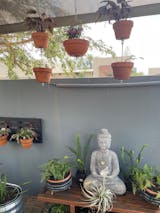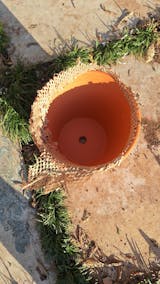
How to get the most out of your winter bulbs.

We’ve all been loving the beauty and joy that wonderful winter bulbs bring us. The gorgeous colour popping up all over is a sign that spring is finally here and we could not be happier. With all the excitement around these coming months, you must be wondering how you can get the most out of your winter bulb wonders. In this blog we explain the best things to do for your bulbs when flowering is done and how you can get the best results for the seasons to come.
Bear in mind that newly purchased bulbs have enough nutrients stored within them to produce flowers the first year after planting. So when you are wanting them to flower for your next season, you will need to give them all of the nutrients they need to bulk up.
These nutrients can be given to your bulbs by feeding them regularly during their growing season. Their ‘main’ growing season happens right after flowering and is essential when trying to get your beautiful blooms to blossom again.
What happens after the bulbs have flowered?
This is when the most important work begins. Bulbs are hungry little things, and once they’ve produced flowers, they turn to the business of fattening themselves up so they can withstand the dormant period, and start making new flowers for next spring.
Regular feeding doesn’t stop when the flowers stop, and to get the best out of your hidden treasures, you will need to continue to feed them with properly formulated bulb food if you want them to flower for the next year.
What to do after flowering

The first step is when you see the flower heads have died off, cut away the spent blooms, and then reduce your watering.
You may be tempted to cut back the foliage of the plants, especially if it's looking a bit tatty, but don’t remove any leaves until they turn yellow naturally and fall on the ground. The rule is – if it’s green, leave them be!
Allow the green growth to continue doing its thing, making food from the sun’s rays, ensuring all the energy goes back into the bulb. If you can pull the withered leaf off with just a gentle tug, it’s ready to go. If the drying foliage bothers you, hide them with summer plantings such as Hemerocallis or Coleus.
We highly recommend you mark where your bulbs are and make sure they don’t get too much water as that can cause them to rot, decrease in size, not flower at all next time, or flower poorly. As a rule of thumb, summer dormant bulbs such as Dutch iris, Freesia and daffodils will tolerate watering once a week, or more, provided the soil is well draining.
When they’re done making babies, the bulbs will go dormant until they get woken up by the cooler weather that next autumn will bring.
Should I lift my bulbs at the end of their season?
Fortunately, with our milder temperatures in South Africa, we generally don’t need to lift bulbs and store them for planting next year – unless you live in an area that gets lots and lots of rainfall, or your soil is particularly waterlogged.
If your bulbs have become extremely crowded and their flowering has started to decrease, they’re choking each other out. The best thing to do is lift them, using a fork, not a spade (you don’t want to run the risk of slicing a lovely big bulb in half now), separate them out, and replant with lots of bulb food.
Some bulbs, such as tulips and hyacinths will only flower once. Yes, even some bulbs are annuals in our warm climate, not perennials.
Muscari will come back again if the soil is loose and well-draining and stays relatively dry during summer and winter. Early-blooming varieties such as, Ipheion and daffodils are reliably perennial, and should flower year after year and multiply over time. So there’s no need to move them unless you’re changing your garden around or they’re overcrowded and you want to plant some of them in another part of your garden.
If you do feel you need to lift any of your bulbs, first prune out the dead stems that are above ground, then dig them out, clean them gently and dry them very well. Remove dead leaves and cut the stem down to the base of the bulb. Check for any bulblets or cormlets that you can gently pry apart from the mother plant, then replant in situ. If you want to store them, place them in a breathable ‘container’, like a hessian sack, and store them in a cool, dry place.


September
20 - 21,
2025





Leave a comment